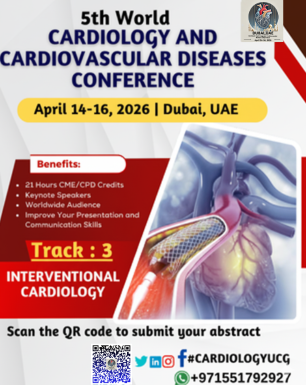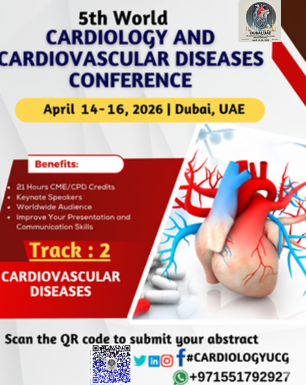Sub Tracks:
Coronary Artery Diseases (CAD),Heart Rhythm Disorders (Arrhythmias),Heart Failure, Valvular Heart Diseases, Congenital Heart Diseases, Cardiomyopathies, Peripheral Artery Diseases (PAD),Stroke and Cerebrovascular Diseases, Aortic Diseases, Hypertensive Disorders, Inflammatory Heart Diseases, Thrombosis and Embolic Diseases
What is cardiovascular-diseases Management ?
Cardiovascular disease (CVD) management refers to the
comprehensive approach used to prevent, diagnose, treat, and monitor
cardiovascular diseases, aiming to reduce morbidity, improve quality of life,
and prevent complications such as heart attacks, strokes, or heart failure.
Effective management involves a combination of lifestyle changes, medical
therapies, surgical interventions (if needed), and regular follow-ups. Here's
an overview:
1. Prevention
- Primary
Prevention:
Aimed at individuals without CVD but at risk (e.g., high blood pressure,
obesity).
- Risk factor control (e.g.,
hypertension, diabetes, high cholesterol).
- Lifestyle modifications (e.g., diet,
exercise, smoking cessation).
- Medications (e.g., statins,
antihypertensives).
- Secondary
Prevention:
Preventing recurrence in patients with existing CVD.
- Aspirin, beta-blockers, and ACE
inhibitors post-heart attack.
- Rehabilitation programs.
2. Diagnosis
- Clinical
Evaluation:
Thorough medical history, physical examination, and symptom assessment.
- Diagnostic Tests:
- Blood tests (e.g., lipid profile,
biomarkers like troponins).
- Imaging (e.g., echocardiogram, CT
angiography, cardiac MRI).
- Stress testing (e.g., treadmill test,
nuclear stress test).
- Electrocardiogram (ECG/EKG) and Holter
monitoring.
3. Treatment Approaches
Lifestyle
Modifications
- Healthy diet (low in saturated fats,
sodium, and added sugars; rich in fruits, vegetables, and whole grains).
- Regular physical activity (e.g., 150
minutes of moderate exercise weekly).
- Weight management and smoking cessation.
- Stress management techniques.
Medications
- For Symptom
Control:
- Nitrates (e.g., for angina).
- Diuretics (e.g., for fluid overload in
heart failure).
- For Risk
Reduction:
- Antihypertensives (e.g., ACE
inhibitors, ARBs, beta-blockers).
- Lipid-lowering agents (e.g., statins,
PCSK9 inhibitors).
- Antiplatelet or anticoagulant
medications (e.g., aspirin, warfarin, DOACs).
Interventional
Procedures
- Non-Surgical
Interventions:
- Angioplasty with stent placement (for
blocked coronary arteries).
- Catheter-based ablations (e.g., for
arrhythmias).
- Surgical
Procedures:
- Coronary artery bypass grafting (CABG).
- Valve replacement or repair.
- Heart transplant (in advanced heart
failure cases).
4. Monitoring and Follow-Up
- Regular
Check-Ups:
Monitoring blood pressure, cholesterol, blood sugar, and weight.
- Rehabilitation
Programs:
Cardiac rehab for post-heart attack or post-surgery recovery.
- Telehealth/Remote
Monitoring:
Use of devices (e.g., wearable ECG monitors) for real-time tracking.
5. Patient Education
- Teaching patients to recognize symptoms
(e.g., chest pain, breathlessness).
- Emphasizing medication adherence and
lifestyle changes.
- Involving caregivers and family in care
planning.
6. Multidisciplinary Care
- Collaboration among healthcare providers:
- Cardiologists, primary care physicians,
dietitians, physiotherapists, and psychologists.
- Integration of mental health support,
especially for stress or depression linked to CVD.
7. Research and Innovations
- Advances in personalized medicine (e.g.,
genetic testing for familial heart diseases).
- Emerging technologies like AI for risk
prediction and robotic-assisted surgeries.
- New drugs (e.g., SGLT2 inhibitors for
heart failure management).





